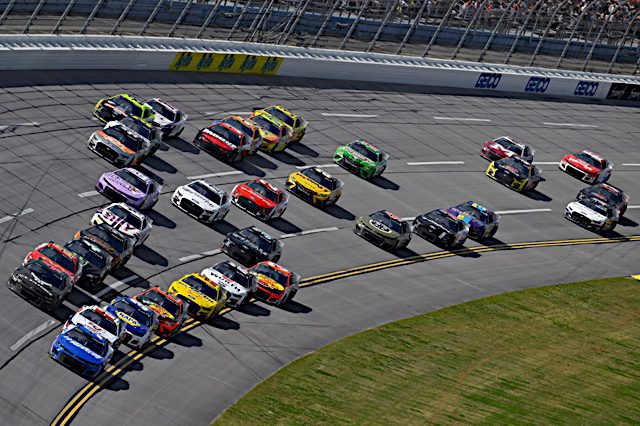The final stage of the NASCAR Cup Series race at Talladega Superspeedway was caution-free. Does that affect your judgment as to whether it was a good race?
Aaron Bearden: Didn’t affect my opinion a bit. As long as the racing provides entertainment value, it doesn’t need to live or die by cautions. Talladega provided enough entertainment.
Luken Glover: It really depends on the quality of racing, not the number of cautions. Superspeedways typically generate enough action to where it is an entertaining final stage regardless of yellows. The Talladega race was an overall good race that had a lot of quality for a superspeedway. There were a few multi-car crashes, but none that took out half the field. The side-by-side action wasn’t the greatest of all time, but it wasn’t slacking either. We saw the importance of pitting in sync in the final stage, and the last lap produced the drama that many love about a superspeedway. In the end, we didn’t have only eight to 10 cars crossing the finish line. The problem has been if there are several Big Ones, it is criticized as a wreck fest. If it features no crashes and it is hard to generate multiple lanes, there is immediately a call for change. Talladega featured a good balance of everything.
Mike Neff: No. The decision on whether a race is good or bad is based on the levels of competition. The inability of a second lane to really make a legitimate attack on the lead was what made it just an OK race.
Josh Roller: If the only two cautions are the two stage-ending cautions, the race can still be fantastic. Having the final stage go caution-free doesn’t bother me, but to a casual or uber-casual fan who looks for cautions, they won’t. The race at Talladega was good, and cautions didn’t affect that.
After multiple Cup teams failed pre-race inspection, should NASCAR alter its inspection process for the Next Gen car? Or should it stiffen penalties?
Neff: What? People can’t follow the rules so let’s make it…
Click Here to Read the Full Original Article at Frontstretch…

